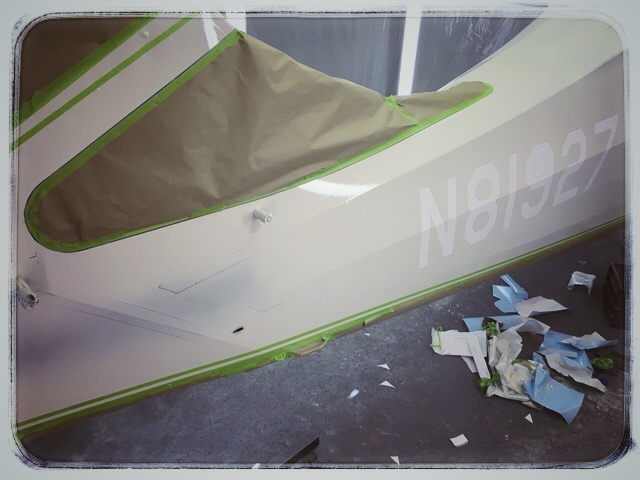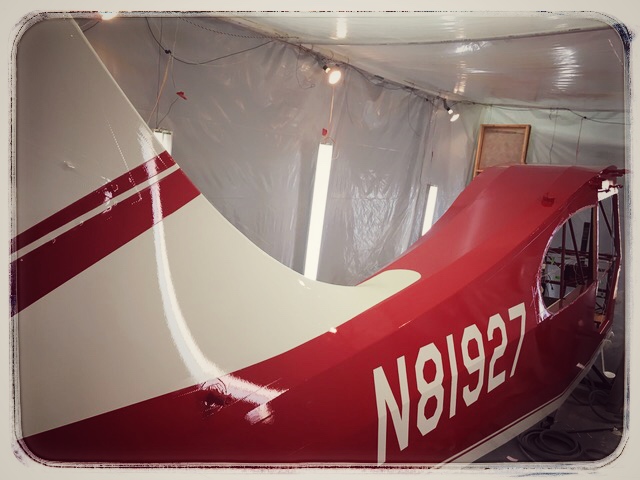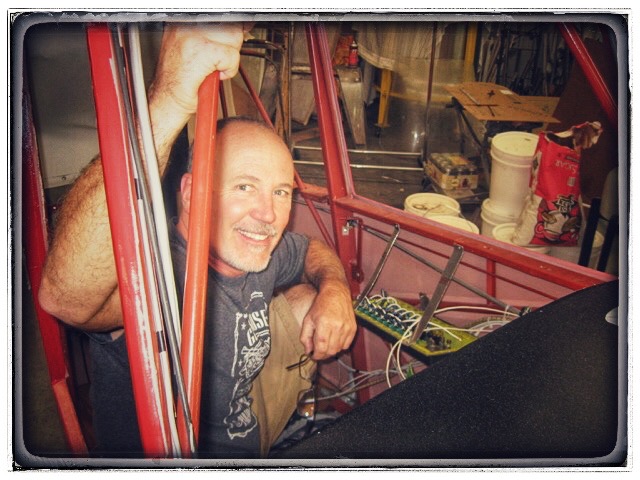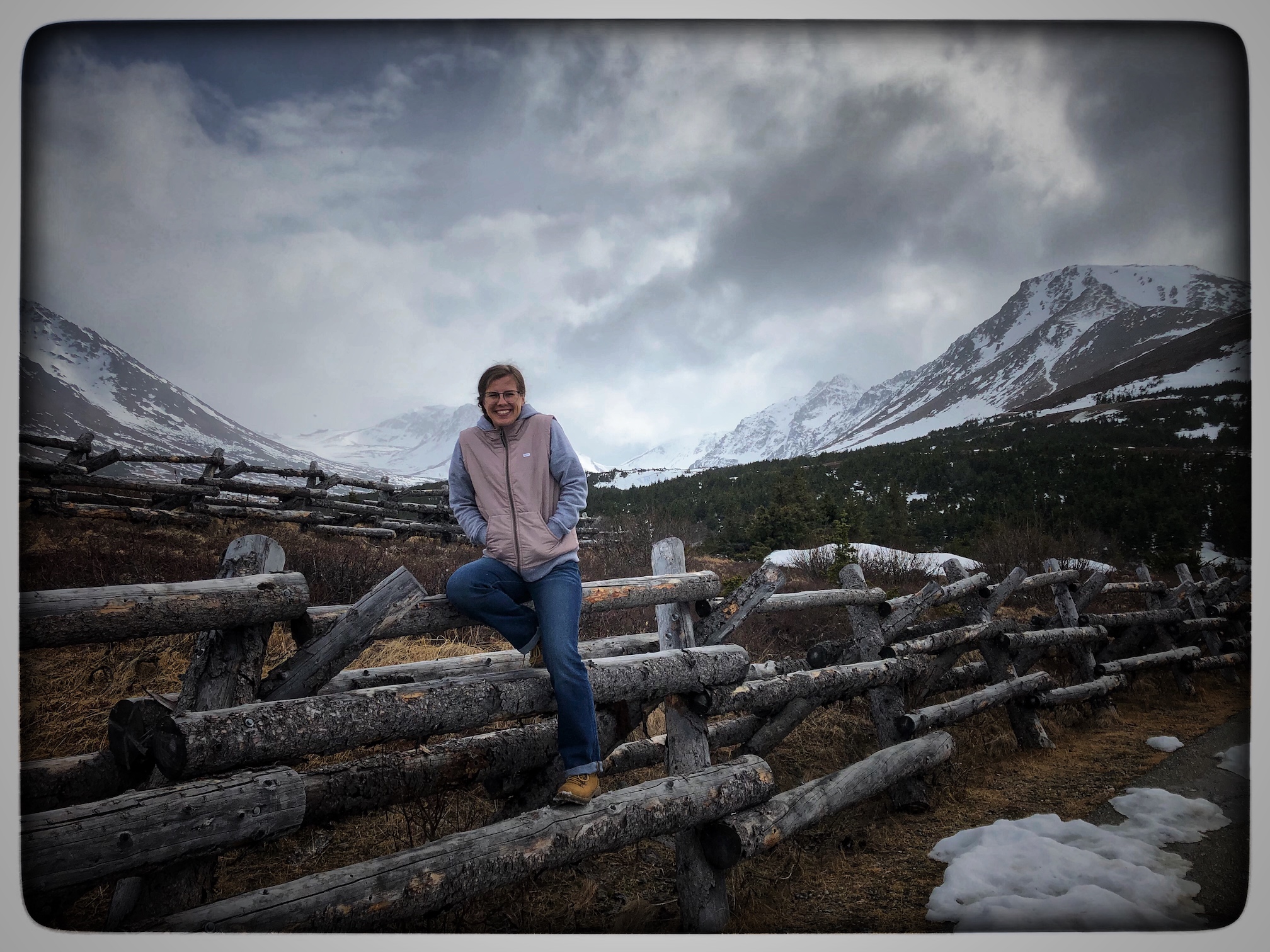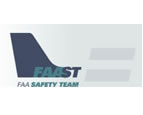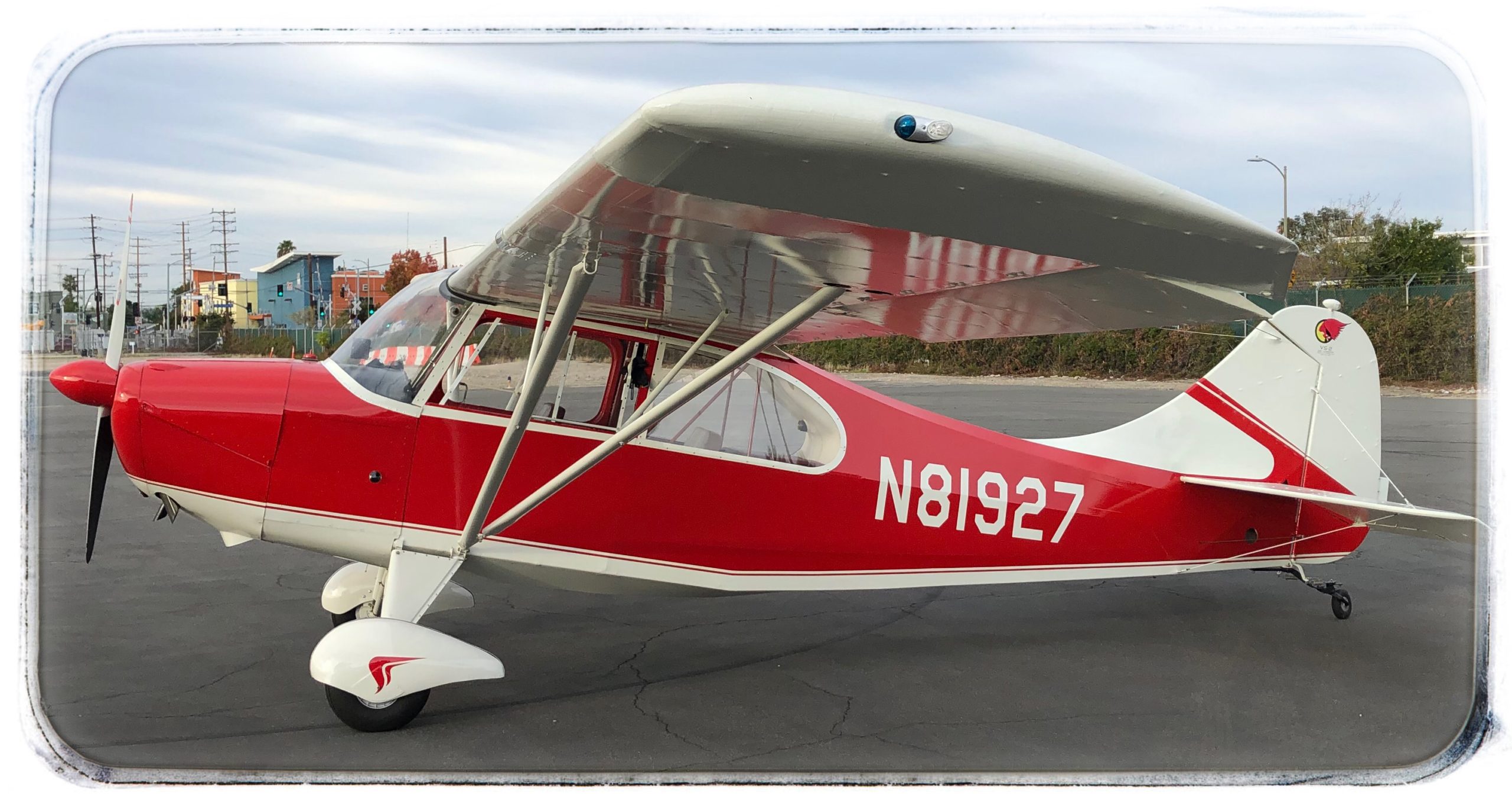
Tailwheel Endorsement & Flight Review
As 2019 was winding down I received a telephone call from Joel Elliott. He had not flown for over twenty years. Was in need of a Flight Review, a Tailwheel Endorsement and more. The goal to fly the 1946 Champ that he had just restored.
Over the next three months he shared the story behind the airplane and the passion that had driven him to complete this tribute to his Father. As I was conceiving this post I asked Joel to put this story in writing. What follows is a wonderful story about a man, a family and the airplane that was part of their life.
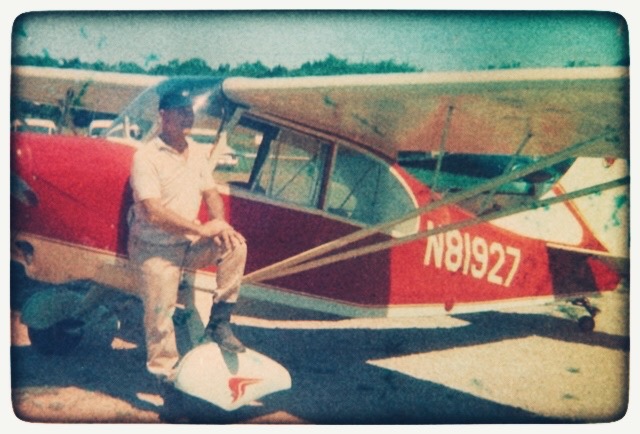
Jacque Elliott~The First Restoration
The earliest logbook entry I found was dated March 17, 1954. Where or what the Champion had been doing between its roll out at the factory eight years earlier has been lost in time. What I do know is that the entry shows it had an estimated total airframe time of 1500 hours and had been completely recovered with Grade A cotton and Butyrate dope. Another interesting discovery was that aa “belly tank” had been installed which indicated it was used for aerial application.
My father Jacque Elliott bought it from John Wells of the Central Valley Airport in Mercedes, Texas. The original bill of sale shows my father bought it for $10 in 1962!
From what my sister tells me, the plane was in pieces and my father restored it in the carport of our house and she remembers helping him brush on the Nitrate dope. He converted it to a “7DC” which allowed for the installation of a C-85-12F with an electric starter and a whopping 15-amp generator. This gave him the amperage to install position lights, radio and a landing light. He had the wings covered by a local repair shop and had the wing tips “clipped” and a new factory approved set of fiberglass wingtips.
I never thought to ask how he came up with the paint scheme, but he painted it with Randolph’s Tennessee Red and Juneau White. He always had a “visual eye” which my own daughter got.
I don’t know if it was his intention, but he used the Champ to tow his friend in his glider and as well as some banner towing. He flew up and down the state of Texas when Lyndon Baines Johnson was running for the United States congress. He also did aerial photography using a military surplus high-altitude camera from World War II for the county agricultural department.
Earliest Memories
Some of my earliest memories are of he and I going to the airport and going flying. My mother didn’t seem to think anything about him taking a three-year-old out flying in a plane he restored in the carport. Having been a Navy veteran serving as a tail gunner in SBD-3 Dauntless dive bomber’s at the Battle of the Coral Sea launching off the USS Lexington. Eventually, as an NCO flying Hellcats out Corpus Christi Naval Air Station must have given her faith in him and his flying abilities.
We moved to North Texas in 1965 and the Champion came with us. My father went to work for Southern Airways as a civilian pilot at Fort Walters, in Mineral Wells, teaching regular Army student pilots how to fly helicopters. He made an arrangement with a local farmer to rent a pasture and we had our own air strip. He and I would go flying to Possum Kingdom dam and then to Rangerville, Texas for breakfast and then back home. My father installed an ultra-low volume spray unit on the Champ and sprayed pecans and cattle with Malathion.
At times, my sister and I would help my dad pull the wings off the plane, mount them on the pick-up truck and hook the tail up to the tow hitch and we’d pull the plane into town so he could do work on it at home. It all seemed to us to be perfectly normal yet looking back, we got a lot of strange looks from people.
At one point, my father came home and said that he’d been made an offer to trade the Champ for a boat. There was a resounding “No way” from my sister and me. “Doble” was like a brother to us. The Champ went everywhere we went as a family. Our Champ had been given the name “Doble” pronounced like “noble”. The story I was told is that when I was younger, I couldn’t pronounce my first name, Joel. It sounded more like “Doble” and So I named the Champ Doble.
My father and I were the last to fly in it in 1977. He asked if I wanted to go fly down to Padre Island and go fishing. Padre Island didn’t have an airport, you landed on the beach. This was something my father and mother use to do in a Stearman he owned before buying the Aeronca.
Relegated to the Back of the Hanger
Sometime after that flight, my father decided to pull the wings off and stored Doble in the back of the hangar. He was too busy as a crop duster to fly it and I was more interested in surfing and girls.
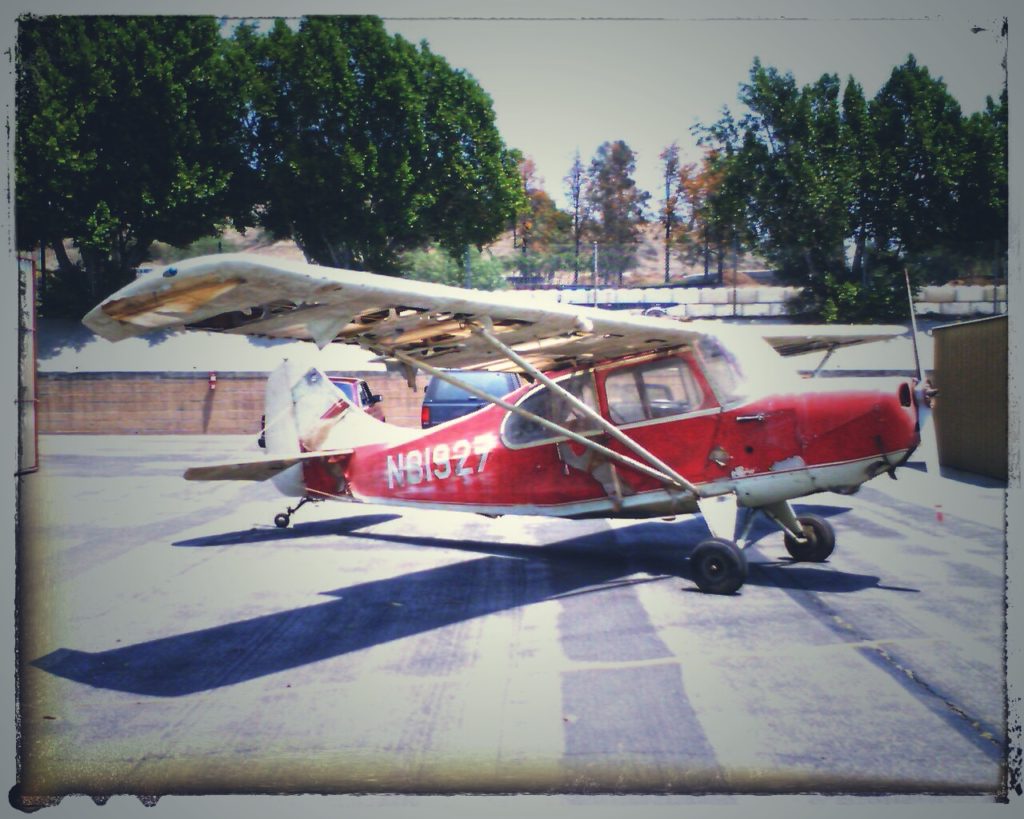
My father passed away in 1998 and the only thing I wanted was the Champ. I brought it to California, in 2004, and planned to restore it. Unfortunately, family and work got in the way. The real work wouldn’t begin until 2016. Since my father had made changes in the Champ customizing it his way, I decided to do some small things too. The goal was to update everything that could be updated and yet keep the original color scheme. First, I went with Stits Polyfiber cover system instead of the Grade A cotton and Nitrate/Butyrate dope. Second, I wanted to do the O-200 conversion STC that gave the C-85 more torque.
Joel Elliott~The Second Restoration
My initial budget and what I thought I’d spend was, what I thought would be realistic. I knew I could do the covering and paint work myself, which I did. However, the engine was another story. My Mechanic at Whiteman airport is John Clausen and together we disassembled the engine and sent everything off for inspection. The first bad news, the cam shaft was beyond limits. Then I got the call from the cylinder shop telling me I had four “boat anchors” aka cylinders and what did I want to do with them since they were cracked and could not be repaired? I had to sit down once I heard the price for 4 new cylinders. Apparently, there has been a surge in C-85’s being used in restorations and the price of C-85 cylinders has gone up. But, J & J Air Parts in Pleasanton, Texas told me that the O-200 cylinder and C-85 cylinder are the identical except that the O-200 had “3” valve springs instead of 2 per valve and would be less expensive. Score! The block was good and came back yellow tagged. “Phew” was all I could say. I found an NOS camshaft for the C-85 for $900 on eBay in its original box! That was more good news.
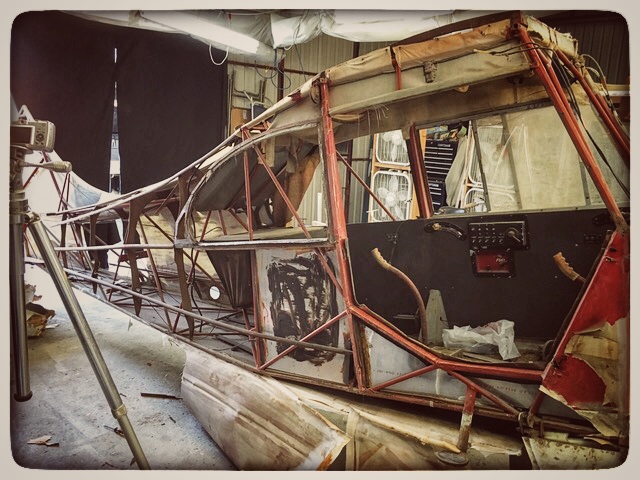
My dad had been using a Stromberg carburetor and Eisenman magnetos. I changed them all for a more modern one, a Marvel Scribner carb with an accelerator pump and a set of Bendix mags. All were sent off for servicing and yellow tagging.
I got rid of the original starter and generator and installed the lightweight B & C starter and 60-amp alternator.
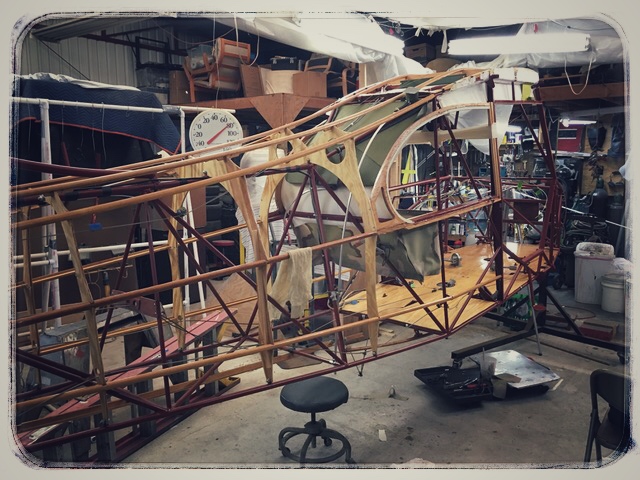
When it came time to disassemble the fuselage, I carefully took measurements and photographed everything prior to removing the old envelope. The smells coming out of the cockpit were a mixture of Malathion, dust and rat droppings. A real mess to say the least. All the wood on the airframe had to be replaced. Some wood pieces I bought from Aircraft Spruce and some I made. The instrument’s were sent off for rebuilding and calibration and the fuselage bead blasted and primed with an aircraft grade epoxy primer. The landing gear oleo struts where also sent off for rebuilding at an authorized repair station.
The wings were stripped of the cloth and all the metal parts removed, bead blasted and primed. The spars were inspected for rot and the “one time” inspection for rib nails coming out. A new coat of wood varnish was applied to the spars and then everything reassembled. New leading edges from Wag Aero were installed as the originals were too beat up.
I built a paint booth out of 2” PVC and painter plastic and did all the covering and paint work in my hangar. The old saying that if you want to finish a project, “you have to make it a point to work on it every day” is so true. I’d get off work and come out to the hangar and put four hours in. Saturday and Sunday were eight-hour days. I was on target to have it done in 3 years. But a new job got in the way and it took another two years before all was done and it was time to assemble the plane. This happened in September and October of 2019. I can say with certainty that it was a complete ground up restoration. I was able to polish out the original canopy. I had to be careful to not cause more damage. While I can see some micro fractures, it’s hardly noticeable when you’re sitting in the cockpit.

I have installed wing tip strobes and upgraded my radio along with the required transponder with Mode C and a uAvionix taillight to enable me to fly in Airspace that requires ADS-B.
March 29, 2020~Back in the Air!
The first flight launched on Sunday March 29, 2020 and was “uneventful”. I had been going around and round about having someone else do the first flight instead of myself. I wanted to do it since my father would have been the first to do it after he had restored it. I was doing high speed taxi tests the week before and finally decided to go for it. I prepared for this by driving around the airport scouting possible locations to put down should it be necessary, doing emergency procedure drills while sitting in the cockpit and remembering to “never try to turn back” to the airport. If I lost the engine, I would put it down in a spot I had scouted out. I had another pilot also preflight the plane as I had done. Pulled the inspection covers, the hole thing.
I taxied out, did the run up, called the tower and requested a high-speed taxi test to help get the oil temperature up, had my friend come over and open the door to check everything with me one last time. With daughter and friends looking on, I called the tower and requested a “box pattern” for the first flight.
The tower approved the box pattern and cleared me for take off. I taxied into position lining up with the center line and slowly applied full throttle. The tail came up almost immediately, I smoothly applied back pressure and Doble lifted off! I initially maintained an 80 mph climb on the upwind leg to get the feel of the plane.
There was no noticeable “wing heaviness” in either wing, I must have rigged it correctly, but I did have to apply some left rudder. The trim tab might need adjusting. I started to trim the elevators and got a surprise. I had the cables opposite what they should be, down was up and up was down. This wasn’t something catastrophic, so I continued climbing to my assigned altitude and flew.
After 20 minutes, I called the tower and made a length wise pass down the runway for pictures and then came in and landed. I took the plane back up Monday and Tuesday and then work and the weather has me grounded. I’m limiting myself to “learning” the plane in calm winds for right now.
No Longer in the Back Seat
There is something inherently cool about this, going from a passenger whom sat in the back seat looking at my dad from behind, as he flew us around to different places, to now being the person who is doing the flying. It’s not surreal, feels more like the completion of a loop coming full circle.


